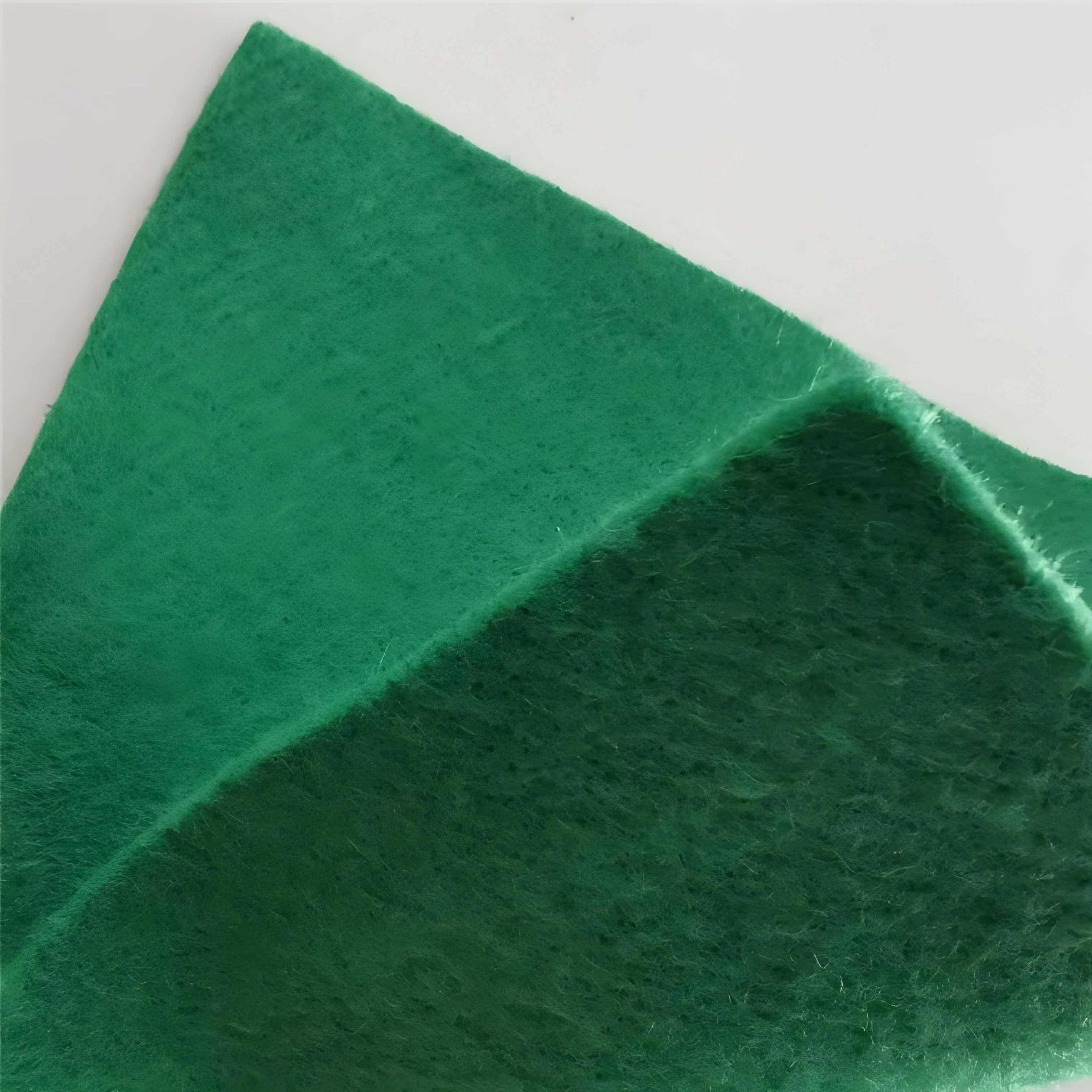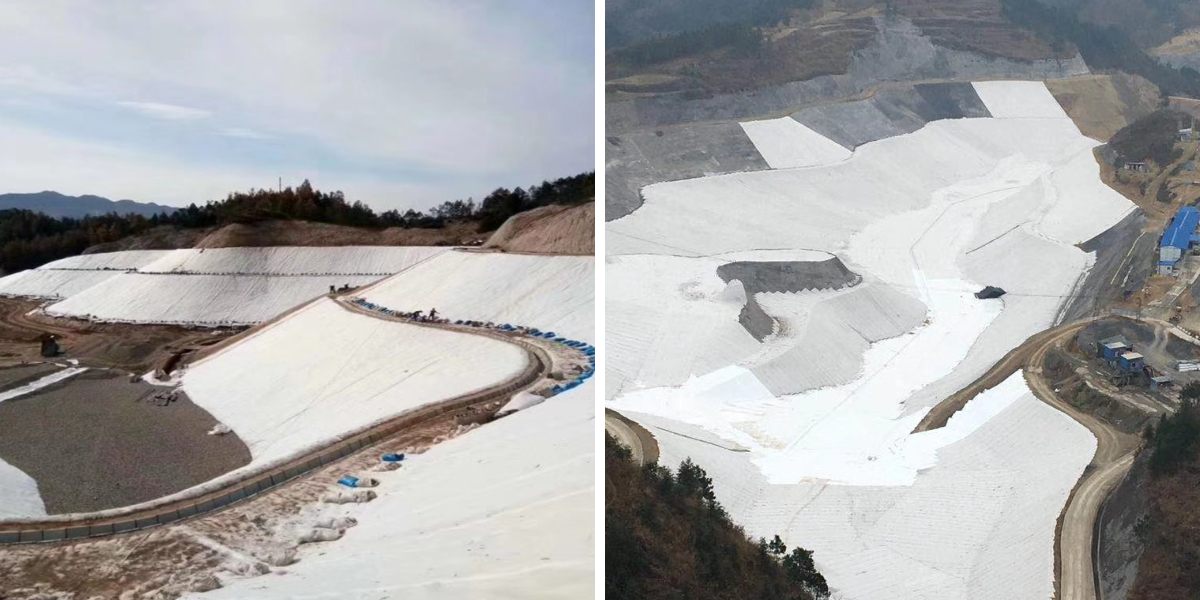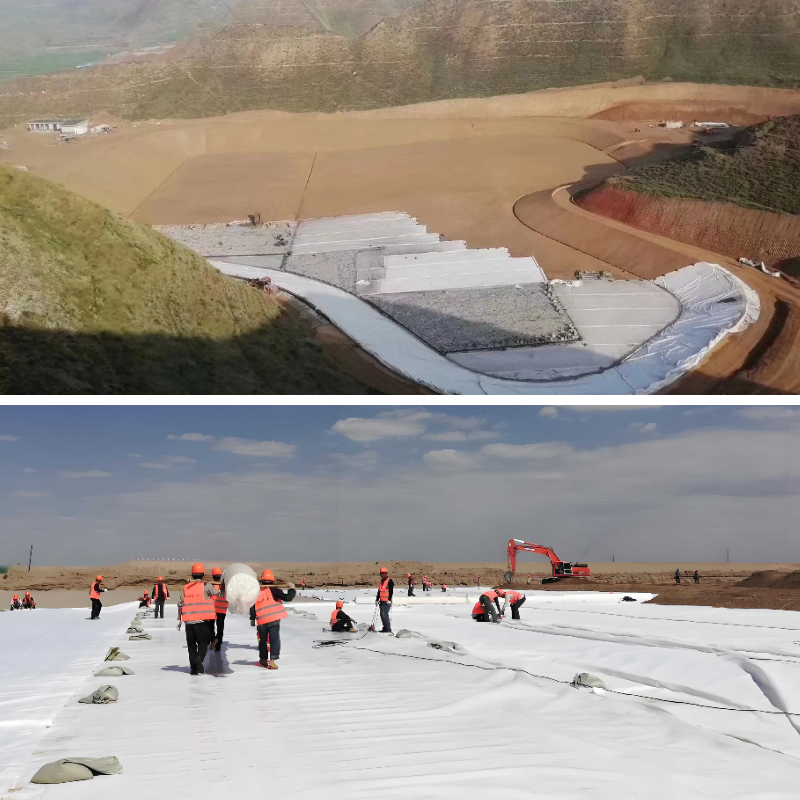Woven Road Fabric
1. Excellent mechanical properties: uniform strength in the longitudinal and transverse directions, effectively dispersing road loads, limiting uneven settlement and lateral displacement of the base layer, and reducing the risk of cracking.
2. Strong weather and corrosion resistance: It can work stably in an environment of -40 ℃~80 ℃, resist UV rays, acid and alkali corrosion, and has a long service life.
3. Construction and cost friendly: lightweight, easy to lay, reducing overall costs.
4. High functional adaptability: It can not only drain the accumulated water in the base layer to avoid softening, but also prevent soil particle loss, and adapt to complex terrains such as soft soil, frozen soil, and high fill.
Product Introduction:
Woven Road Fabric is a geotextile produced through the weaving process of interweaving warp and weft yarns (different from non-woven processes such as needle punching and thermal bonding). Its warp and weft fibers are arranged in a regular cross pattern, forming a sheet-like material with a fixed pore structure and high strength.
Compared with non-woven road geotextiles (such as needle punched geotextiles), its core difference is that it has a tighter structure, more stable mechanical properties, and more outstanding tensile strength and tear resistance. It can be directly used as a "reinforced skeleton" for road structures, rather than a simple filtering or isolation material.
Core Features
The characteristics of woven road fabrics are determined by the combination of "weaving process+polymer fibers", which can be summarized into the following four points:
1. High strength and isotropic stability
The interwoven structure of warp and weft yarns gives it high tensile strength in both the longitudinal (warp) and transverse (weft) directions (conventional products can reach a tensile strength of 20-100kN/m), and the difference in strength between the warp and weft directions is small (usually ≤ 1.5:1), which can evenly distribute road loads and avoid cracking of the base layer caused by local stress concentration.
2. Low elongation and strong deformation resistance
Under rated load, its fracture elongation is usually ≤ 10% (much lower than the 20% -50% of non-woven geotextiles), which can effectively limit the uneven settlement and lateral displacement of road base, especially suitable for the reinforcement of soft soil foundation or high fill roads.
3. Excellent environmental resistance
Using weather resistant polymer materials such as polypropylene and polyester, it has the characteristics of UV resistance, acid and alkali corrosion resistance, and aging resistance - stable performance in the temperature range of -40 ℃~80 ℃, long-term exposure to soil, rainwater or industrial pollutants, mechanical performance degradation rate ≤ 15% (service life can reach 10-20 years).
4. Controllable pore structure
The weaving process can accurately control the porosity (usually 15% -30%) and pore size (0.1-0.5mm) of the fabric, which can ensure that rainwater and groundwater can be discharged through the pores (to avoid softening of the base layer), and prevent soil particles from flowing away with water (to prevent "pipe surge" or "slurry overturning" of the road base layer).
Product Parameters:
project | metric | ||||||||||
Nominal strength/(kN/m) | |||||||||||
6 | 9 | 12 | 18 | 24 | 30 | 36 | 48 | 54 | |||
1 | Longitudinal and transverse tensile strength / (kN/m) ≥ | 6 | 9 | 12 | 18 | 24 | 30 | 36 | 48 | 54 | |
2 | Maximum elongation at maximum load in longitudinal and transverse directions/% | 30~80 | |||||||||
3 | CBR top penetration strength /kN ≥ | 0.9 | 1.6 | 1.9 | 2.9 | 3.9 | 5.3 | 6.4 | 7.9 | 8.5 | |
4 | Longitudinal and transverse tearing strength /kN | 0.15 | 0.22 | 0.29 | 0.43 | 0.57 | 0.71 | 0.83 | 1.1 | 1.25 | |
5 | Equivalent aperture O.90(O95)/mm | 0.05~0.30 | |||||||||
6 | Vertical permeability coefficient/(cm/s) | K× (10-¹~10-), where K=1.0~9.9 | |||||||||
7 | Width deviation rate /% ≥ | -0.5 | |||||||||
8 | Unit area mass deviation rate /% ≥ | -5 | |||||||||
9 | Thickness deviation rate /% ≥ | -10 | |||||||||
10 | Thickness coefficient of variation (CV)/% ≤ | 10 | |||||||||
11 | Dynamic perforation | Puncture hole diameter/mm ≤ | 37 | 33 | 27 | 20 | 17 | 14 | 11 | 9 | 7 |
12 | Longitudinal and transverse fracture strength (grab method)/kN ≥ | 0.3 | 0.5 | 0.7 | 1.1 | 1.4 | 1.9 | 2.4 | 3 | 3.5 | |
13 | Ultraviolet resistance (Xenon arc lamp method) | Longitudinal and transverse strength retention rate% ≥ | 70 | ||||||||
14 | Ultraviolet resistance (fluorescence UV lamp method) | Longitudinal and transverse strength retention rate% ≥ | 80 | ||||||||
Product Applications:
1. Strengthen the base layer of newly built roads
Applicable scenario: subgrade treatment of expressways, municipal trunk roads, and rural roads, especially suitable for soft soil foundation (such as beach coating, marshland) or high fill sections.
Function: Laying between the roadbed and the base layer (such as cement stabilized crushed stone layer), forming a "reinforced interlayer", dispersing the pressure of vehicle loads on the roadbed, preventing the upward infiltration of roadbed soil particles, and avoiding the "compaction" or "cracking" of the base layer.
2. Renovation and widening of old roads
Applicable scenarios: Old cement pavement "white to black" (with asphalt layer added), and the connection between new and old roadbeds during road widening.
Function: Laying machine woven fabric on cracks in old road surfaces can "block" the upward reflection of cracks (i.e. "reflective cracks", common diseases of old roads); Laying at the junction of the old and new roadbeds can alleviate the difference in settlement between the two and avoid the occurrence of "step like" cracks at the junction.
3. Road maintenance and repair
Applicable scenarios: repair of local potholes and cracks on asphalt pavement, or rapid reinforcement of temporary roads (such as construction access roads and emergency passages).
Function: During repair, lay the fabric underneath the damaged surface as a "reinforcement layer" to enhance the load-bearing capacity of the repair area; Used in temporary roads, it can reduce the amount of gravel used, lower construction costs, and facilitate later recycling and reuse.
4. Special road engineering
Scenario 1: Airport runways, cargo terminal yards - need to withstand high loads from heavy aircraft and container trucks. Woven fabrics can enhance the fatigue resistance of the base layer and reduce settlement.
Scenario 2: Roads in permafrost regions (such as the Qinghai Tibet Plateau) - The low temperature resistance of the fabric can avoid the freeze-thaw damage to the base caused by temperature changes, while assisting drainage to prevent roadbed instability caused by permafrost melting.
If the core requirement of the project is to enhance structural strength and resist deformation, machine woven road fabrics should be prioritized; If the requirement is "filtration, isolation, and prevention of particle loss", non-woven geotextiles can be used.












